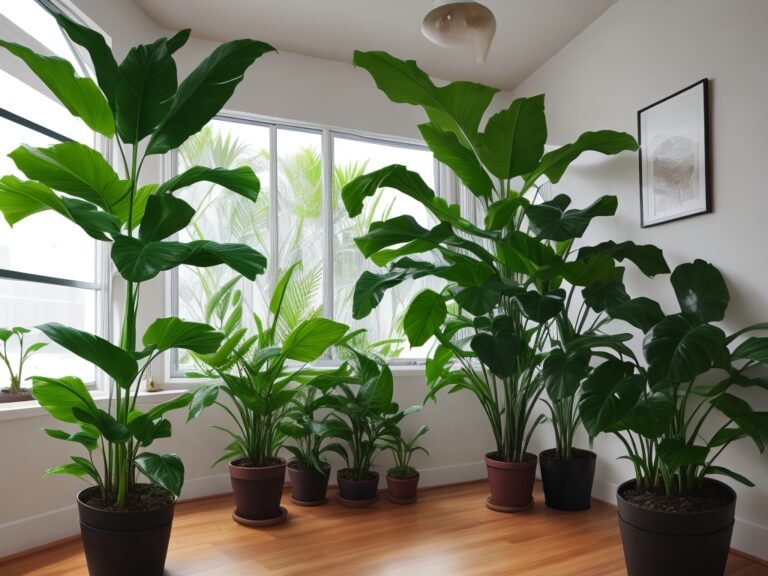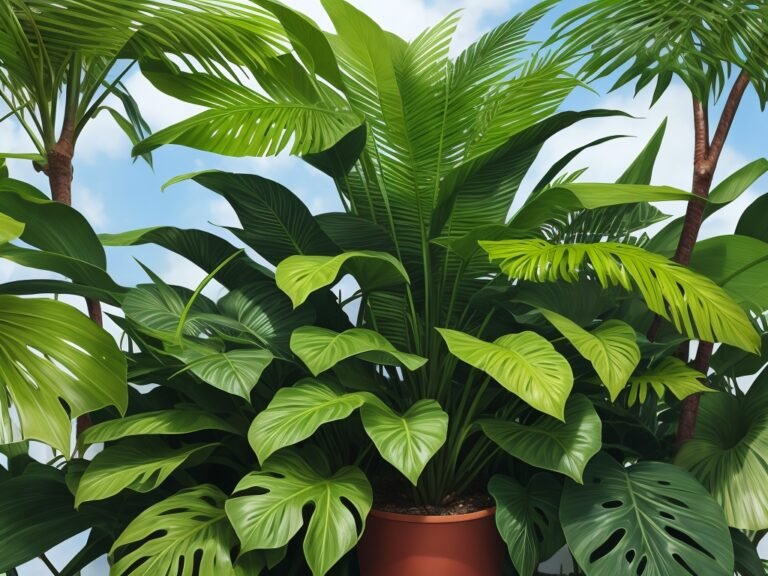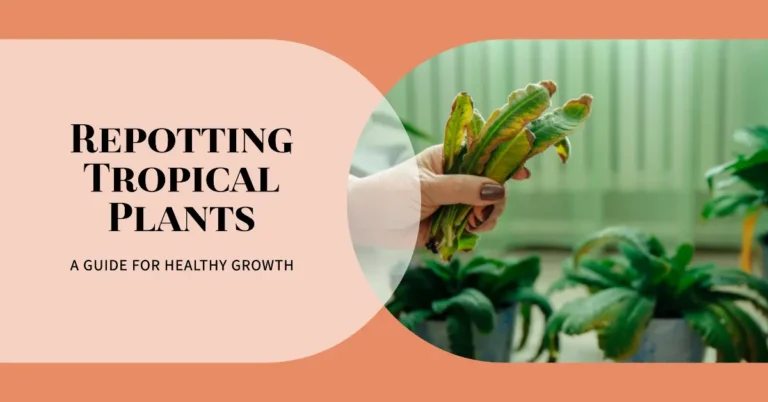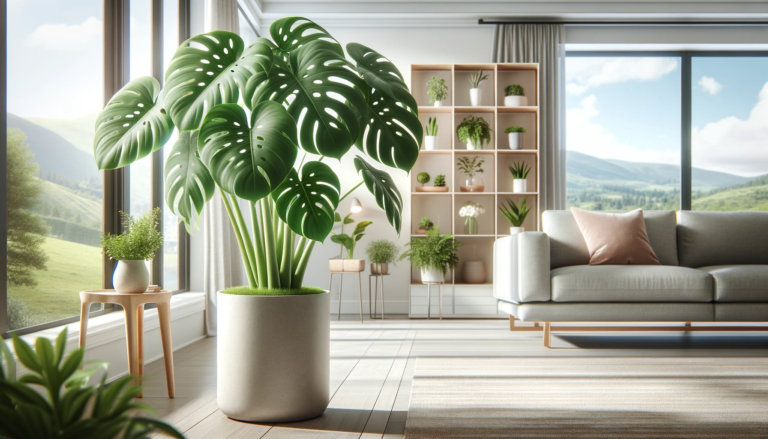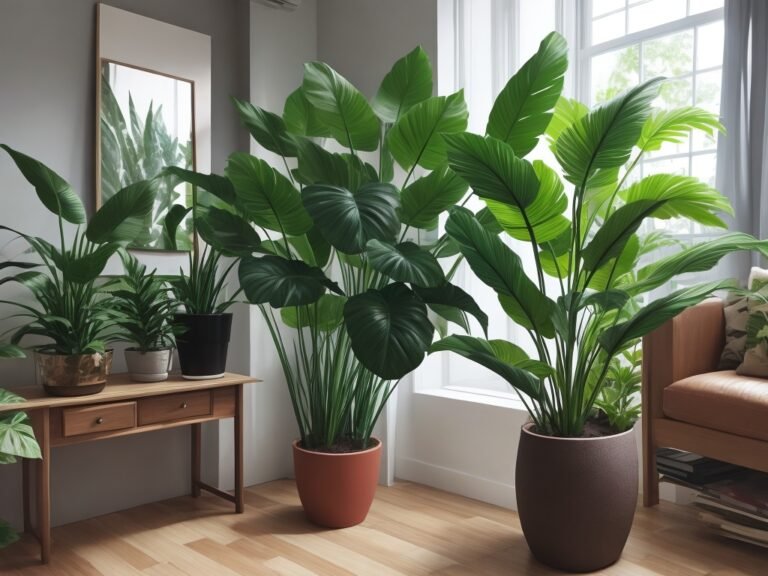12 Unique And Unusual Tropical Plants For Plant Lovers
Key Takeaways:
- Unique and unusual tropical plants offer a vibrant and exotic addition to any plant lover’s collection.
- These plants showcase a wide range of interesting features, such as colorful leaves, impressive blooms, and unusual growth habits.
- Incorporating these tropical gems into your indoor or outdoor space can create a visually stunning and eye-catching display.
- By exploring different options for tropical plants, you can enjoy a diverse and captivating plant collection that will be the envy of fellow plant enthusiasts.
Who doesn’t love a little tropical paradise in their own home? If you’re a plant lover looking to add some uniqueness and intrigue to your indoor garden, then you’re in for a treat! In this article, we’ll explore the fascinating world of 12 unique and unusual tropical plants that are sure to make your friends green with envy.
From nature’s carnivorous beauties like pitcher plants and Venus flytraps, to the exotic marvels of the corpse flower and bird of paradise, we’ll delve into the remarkable characteristics and care requirements of these botanical wonders.
So get ready to embark on a journey and discover the extraordinary beauty that nature has to offer. Buckle up, plant lovers!
| Plant Name | Scientific Name | Native Region | Unique Features |
|---|---|---|---|
| Bird of Paradise | Strelitzia reginae | South Africa | Striking orange and blue flowers |
| Corpse Flower | Amorphophallus titanum | Sumatra, Indonesia | Produces the largest unbranched inflorescence in the world |
| Umbrella Tree | Schefflera actinophylla | Australia, New Guinea | Large compound leaves in the shape of an umbrella |
| Sensitive Plant | Mimosa pudica | Tropical America | Folds its leaves inward when touched or shaken |
| Swiss Cheese Plant | Monstera deliciosa | Tropical rainforests of Central America | Distinctive large, perforated leaves |
| Pitcher Plant | Nepenthes spp. | Tropical regions worldwide | Carnivorous plant with pitcher-like leaves to trap insects |
| Bromeliad | Bromeliaceae family | American tropics | Colorful, long-lasting flowers and unique rosette-shaped leaves |
| Dragon’s Blood Tree | Dracaena cinnabari | Socotra, Yemen | Tree with umbrella-shaped crown and red sap resembling dragon’s blood |
| Purple Passion | Gynura aurantiaca | Indonesia, Southeast Asia | Velvety purple leaves and yellow/orange flowers |
| Living Stone Plant | Lithops spp. | Southern Africa | Small succulent plants that mimic stones for camouflage |
| Heliconia | Heliconia spp. | Tropical regions worldwide | Large and vibrant flowers with unique shapes and colors |
| Palm Tree Cycad | Cycas revoluta | Japan | Resembles a palm tree with a crown of lush, fern-like leaves |
12 Unique and Unusual Tropical Plants
Are you a plant lover looking for unique and unusual tropical plants to add to your collection?
Hey there! If you’re a plant enthusiast like me, I’ve got some exciting recommendations for you.
We’ll explore 12 unique and unusual tropical plants that will surely catch your eye and bring a touch of exotic beauty to your home or garden.
Let’s dive in!
1. Pitcher Plants: Nature’s Carnivorous Beauties
Pitcher plants are fascinating carnivorous plants known for their unique pitcher-shaped leaves.
These leaves contain digestive enzymes that attract and trap insects, which the plant then digests to obtain nutrients.
They come in various shapes, sizes, and colors, making them captivating additions to any plant collection.
To care for pitcher plants, provide them with a humid environment, bright but indirect light, and water them with distilled or rainwater.
Avoid using tap water or fertilizers, as these can harm the plants.
Pitcher plants are a captivating and beautiful choice for plant lovers looking for something unique and unusual.
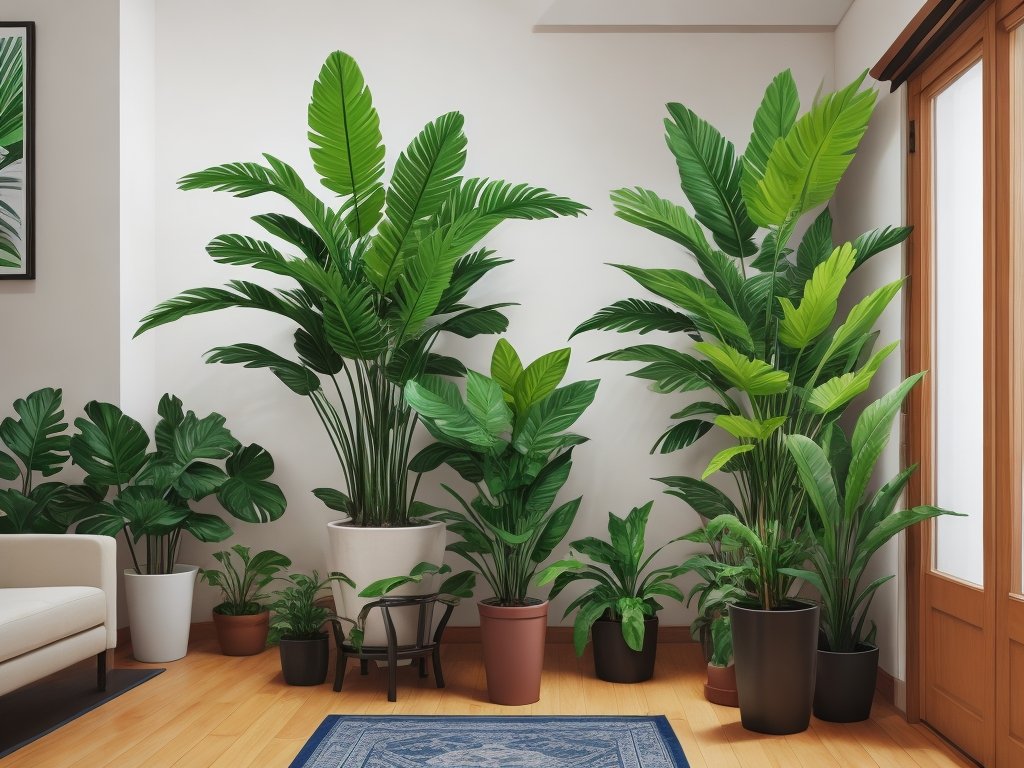
2. Corpse Flower: The Stinky Marvel
The Corpse Flower, also known as Amorphophallus titanum, is a unique and unusual tropical plant that is famous for its strong and unpleasant odor.
It gets its name because its scent resembles that of a decaying corpse.
This plant is native to the rainforests of Sumatra and is one of the largest flowers in the world.
Despite its unpleasant smell, the Corpse Flower is admired and sought after by plant enthusiasts due to its rarity and the fascinating blooming process.

3. Venus Flytrap: A Fascinating Insect-Catching Wonder
The Venus Flytrap is a captivating plant that catches and consumes insects. Its leaves have specialized trigger hairs that, when touched by prey, cause the trap to snap shut.
The plant then secretes digestive enzymes to break down the insect for nourishment.
It’s an amazing example of nature’s adaptability and survival strategies.
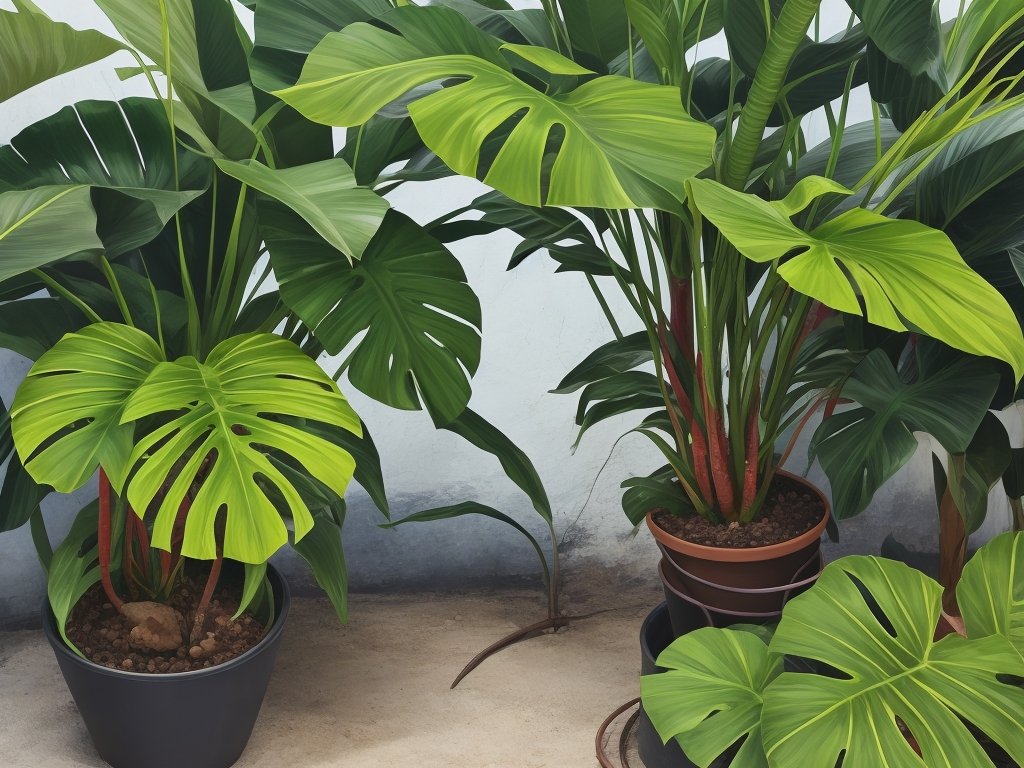
4. Bird of Paradise: The Exotic and Colorful Marvel
The Bird of Paradise is a stunning tropical plant known for its exotic and colorful blooms. It’s an absolute marvel to behold with its vibrant hues and unique shape that resembles a tropical bird in flight.
This plant adds a touch of elegance and beauty to any garden or indoor space.
Its long-lasting flowers make it a favorite among plant lovers.
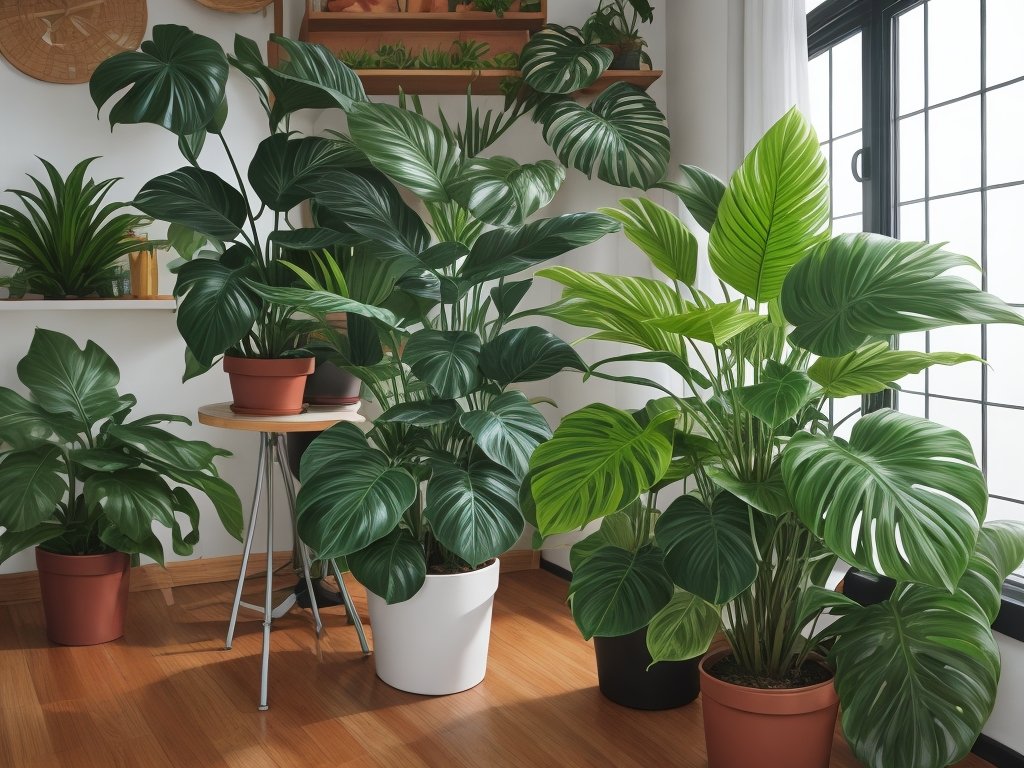
5. Dracaena Cinnabari: The Dragon Blood Tree
Dracaena Cinnabari, also known as the Dragon Blood Tree, is a unique and unusual tropical plant. It gets its name from the dark red resin that it produces, which resembles dragon blood.
This tree is native to the Socotra archipelago in Yemen.
The Dragon Blood Tree has a striking umbrella-shaped canopy and can reach heights of up to 30 feet. It is a slow-growing tree that requires well-draining soil and bright, indirect sunlight.
Due to its sensitivity to cold temperatures, it is best suited for tropical or subtropical climates.
6. Jade Vine: A Rare and Stunning Floral Treasure
The Jade Vine is a rare and stunning tropical plant that will captivate any plant lover with its unique and vibrant turquoise flowers. It is native to the Philippines and is known for its long cascading blooms that resemble jade-colored chains.
This plant needs a warm and humid environment and indirect sunlight to thrive.
Water it regularly to keep the soil moist, but not soggy. With proper care, the Jade Vine will be a real showstopper in your collection.
7. Rafflesia Arnoldii: The Giant Fleshy Flower
Rafflesia Arnoldii is a unique tropical plant known for its giant, fleshy flowers. Here are a few key facts about this fascinating plant:
- It is the largest individual flower in the world, reaching up to 3 feet (1 meter in diameter.
- The flower has a distinctive smell similar to rotting meat, which helps attract its pollinators: flies and carrion beetles.
- Rafflesia Arnoldii is native to the rainforests of Southeast Asia, particularly Indonesia and Malaysia.
- It is a parasitic plant, relying on a host vine called Tetrastigma for nutrients and support.
- Due to its rarity and brief blooming period (around 5 days, seeing a Rafflesia Arnoldii in full bloom is a rare and special experience.
If you’re lucky enough to encounter a Rafflesia Arnoldii, take a moment to appreciate its unique beauty and unusual characteristics.
8. Welwitschia Mirabilis: A Living Fossil
Welwitschia Mirabilis, also known as a living fossil, is a unique and unusual plant found in the desert regions of Namibia in southwestern Africa.
It is considered one of the oldest living plants on Earth, with a lifespan that can exceed 1,000 years! This plant has two long, strap-like leaves that continue to grow throughout its life, giving it a distinct appearance.
Despite its harsh desert habitat, Welwitschia Mirabilis has adapted to survive extreme temperatures and minimal rainfall.
It is truly a remarkable plant that showcases the tenacity of nature.
9. Amorphophallus Titanum: The Corpse-Lily
The Amorphophallus Titanum, also known as the Corpse-Lily, is a unique tropical plant known for its enormous size and foul odor. It produces one of the largest flowers in the plant kingdom, which gives off a rotting flesh smell to attract pollinators.
The Corpse-Lily is a rare and fascinating plant that can be challenging to cultivate due to its specific growing conditions and long periods of dormancy.
However, with the right care and patience, it can be a stunning addition to any plant lover’s collection.
10. Tacca chantrieri: The Bat Flower
The Tacca chantrieri, also known as the Bat Flower, is a unique and unusual tropical plant.
Its most distinctive feature is its black flowers that resemble bat wings, hence the name.
This plant requires a warm and humid environment to thrive.
It prefers indirect sunlight and moist soil.
Regular watering and occasional misting are essential for its care.
However, be cautious of overwatering, as it can cause root rot.
The Bat Flower is a showstopper in any garden or indoor space with its striking appearance and intriguing symbolism.
11. Wolffia: The World’s Smallest Flowering Plant
Wolffia is the smallest flowering plant in the world.
It is so tiny that it could fit on the tip of a pin! Despite its size, this plant is fascinating.
It floats on the surface of ponds and lakes, and its flowers are barely visible.
Wolffia is low-maintenance and can be a unique addition to your plant collection.
12. Lithops: The Living Stones
Lithops, commonly known as “Living Stones,” are unique and unusual tropical plants that resemble small pebbles or stones.
They have adapted to survive in arid environments by developing a camouflage-like appearance.
These plants are low maintenance and require minimal watering.
With their fascinating appearance, they make a great addition to any plant lover’s collection.
How to Care for Unique and Unusual Tropical Plants
To care for unique and unusual tropical plants, you’ll need to understand their specific care requirements and provide the right environment and lighting for them. Additionally, proper watering and feeding techniques are important for their health and growth.
Understanding their Unique Care Requirements
Understanding the unique care requirements of unusual tropical plants is essential to ensure their health and thriving. It’s important to provide the right environment, lighting, and temperature conditions.
Watering and feeding should be done with care, considering each plant’s specific needs.
Proper knowledge and research are key to successfully maintaining these extraordinary plants.
Providing the Right Environment and Lighting
To provide the right environment for unique and unusual tropical plants, it’s important to consider their specific needs. These plants usually thrive in warm and humid conditions, so aim for a temperature between 70-85°F (21-29°C) and humidity levels of 60-80%.
When it comes to lighting, most of these plants require bright indirect light to grow properly.
Place them near a window where they can receive filtered sunlight or use artificial grow lights if necessary. Avoid placing them in direct sunlight as it can cause leaf burn.
Watering and Feeding Tips
Watering and feeding are crucial for the health of unique and unusual tropical plants. Here are some tips to help you care for them:
- Watering: Most tropical plants prefer moist soil but not overly soggy. It’s important to understand the specific watering needs of each plant, as they can vary. Allow the top inch of soil to dry out slightly before watering again. Use room-temperature water and ensure proper drainage to prevent root rot.
- Feeding: Tropical plants often require regular feeding to thrive. Use a balanced, water-soluble fertilizer specially formulated for tropical plants. Follow the instructions on the packaging for the correct dosage and frequency. Avoid over-fertilization, as it can damage the plants.
- Humidity: Many unusual tropical plants thrive in high humidity environments. To increase humidity, you can use a humidifier or place a tray of water near the plants. Misting the leaves with water can also help create a humid microclimate.
- Avoiding tap water: Some unique tropical plants are sensitive to chemicals commonly found in tap water, such as chlorine and fluoride. If possible, use filtered or distilled water to avoid any potential harm to the plants.
Remember, different plants have different care requirements, so always research and understand the specific needs of your unique tropical plants. Monitoring the moisture levels in the soil and closely observing the plants will help you determine their watering and feeding needs.
Frequently Asked Questions about Unique and Unusual Tropical Plants
Can these Plants Survive in Non-Tropical Climates?
Can these Plants Survive in Non-Tropical Climates?
Most of these unique and unusual tropical plants are not suited to non-tropical climates due to their specific temperature, humidity, and light requirements.
They thrive in warm, humid environments and may struggle to survive in colder or drier conditions.
It’s best to research each plant’s specific needs before attempting to grow them outside of their natural habitat.
Are Unique and Unusual Tropical Plants Difficult to Maintain?
Unique and unusual tropical plants can be challenging to maintain. They often have specific care requirements, such as specific humidity levels, temperature ranges, and lighting conditions.
Additionally, some plants, like carnivorous plants, require specialized feeding and watering methods.
However, with proper research and understanding of their needs, you can create a suitable environment for these fascinating plants to thrive.
Can I Propagate these Plants on My Own?
Yes, you can propagate these plants on your own! Many unique and unusual tropical plants can be propagated through various methods such as stem cuttings, leaf cuttings, division, or even from seeds.
Simply follow the specific propagation instructions for each plant to ensure success.
Propagating these plants can be a fun and rewarding way to expand your collection!
What Precautions Should I Take While Handling Carnivorous Plants?
When handling carnivorous plants, it’s important to take precautions to protect yourself and the plant. Here are some key precautions to keep in mind:
- Avoid touching the plant’s sensitive areas, such as the traps or pitchers, as they may cause harm or trigger a defensive reaction.
- Wear protective gloves to prevent any potential skin irritation or allergies caused by the plant’s enzymes or hairs.
- Be cautious when feeding the plant insects or other prey. Use tweezers or tongs to safely place the prey in the plant’s traps, avoiding any accidental contact with your fingers.
- Keep the plant away from children and pets, as some carnivorous plants may be toxic if ingested.
- Provide the plant with the appropriate growing conditions, including adequate light, humidity, and moisture, to ensure its overall health and minimize potential stress.
Final Verdict
The world of unique and unusual tropical plants is truly a marvel to behold. From carnivorous beauties like pitcher plants and Venus flytraps to stunning floral treasures like the jade vine and bird of paradise, these plants offer a delightful and captivating experience for plant lovers.
While their care requirements may be specific, providing the right environment, lighting, watering, and feeding can help these plants thrive.
And despite their exotic nature, they can be propagated and enjoyed in non-tropical climates with proper care. So why not add a touch of rarity and wonder to your plant collection with these extraordinary tropical plants?

